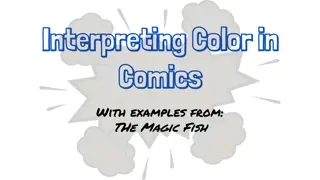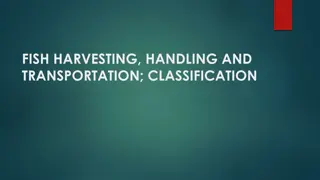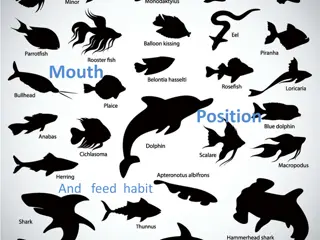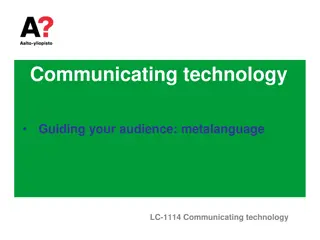Understanding Panel-to-Panel Transitions in Comics with Examples from "The Magic Fish
Explore the world of panel-to-panel transitions in comics through Scott McCloud's six basic types: Moment-to-Moment, Action-to-Action, Subject-to-Subject, Scene-to-Scene, Aspect-to-Aspect, and Non-Sequitur. Discover how these transitions impact storytelling and engage readers using examples from "The Magic Fish" by Trung Le Nguyen.
Download Presentation

Please find below an Image/Link to download the presentation.
The content on the website is provided AS IS for your information and personal use only. It may not be sold, licensed, or shared on other websites without obtaining consent from the author. Download presentation by click this link. If you encounter any issues during the download, it is possible that the publisher has removed the file from their server.
E N D
Presentation Transcript
Panel to Panel Transitions in Panel to Panel Transitions in Comics Comics With examples from: THe Magic Fish by Trung Le Nguyen
Panel to Panel Transitions According to Scott McCloud* there are six basic types of panel to panel transitions found in comics: 1. 2. 3. 4. 5. 6. Moment to Moment Action to Action Subject to Subject Scene to Scene Aspect to Aspect Non Sequitur *See Scott McCloud s book Understanding Comics pages 70-89 for information on transitions. See Scott McCloud s book Making Comics pages 15-17 for information on transitions.
Moment To Moment Transitions Moment to Moment transitions concentrate on an action they progress through a series of moments.
Action to Action Transitions Action to action transitions occur when person or thing is portrayed in a series of actions.
Subject to Subject Transitions In a subject to subject transition we see panels change the focus from one subject to another as a scene progresses.
Scene to scene Transitions Panel transitions from scene to scene show the reader how the story progresses through various spaces, settings and times.
Aspect to Aspect Transitions Aspect to aspect transitions move the reader s attention from one aspect of a scene or place to another in order to convey a certain tone or mood.
Non Sequitur Transitions These transitions tend to be an unrelated sequence of characters, scenes, and objects. The relationship between the images is up to the reader to discern in order to find meaning or to detect mood or tone.
Group Activity: Transitions and empathy / Identification 1. 2. 3. Review this image from pg. 28 Identify the transitions Discuss why Nguyen might have transitioned between the panels in these ways. What do the transitions make the reader s feel? What do you think Helen is feeling in the past and the present as it s represented on the page? What universal message is Nguyen developing with this story and this particular page? How does the use of transitions between the three storylines here help the reader empathize with Helen (an immigrant)? Find another page/s in The Magic Fish where you can see Nguyen using a sequence of images in a way that helps the reader identify with Ti n as he struggles with his sexuality. 4. 5. 6. 7. 8.


